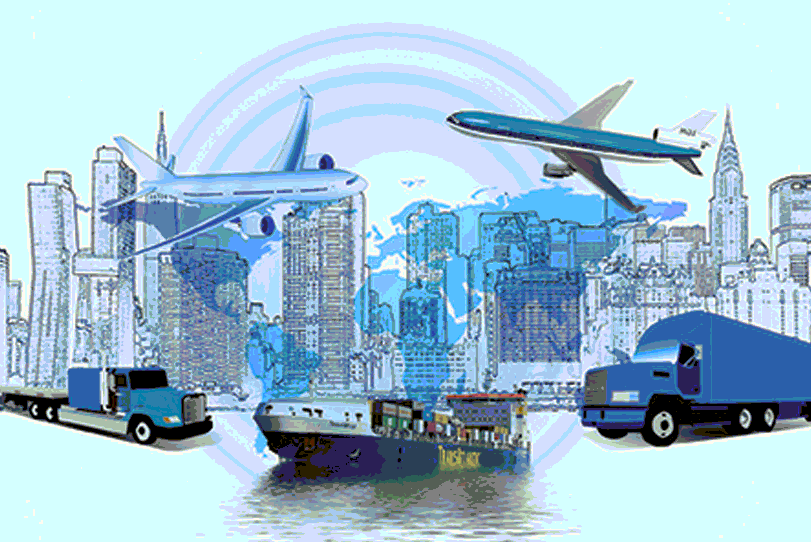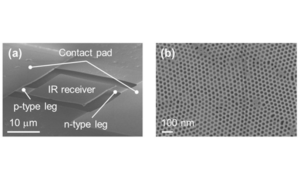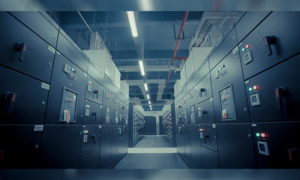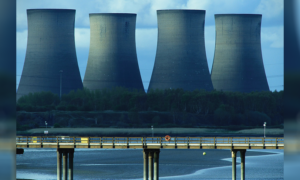Discussing the impeding requirement of temperaturecontrolled transportation in F&B sector industry leaders mention ways to deal with the challenges in preserving the quality of fragile and agile goods throughout the cold chain transportation.
Cold chain industry is primarily driven by the bulk agricultural commodities; and the consumer segments like frozen food, dairy, high-value fruits and vegetables and pharmaceutical storage. Owing to the booming demand, cold chain capacity has always been a concern for the industry, but the sustainable interest and ever-growing demand from the food, dairy, sea-food and bio-pharmaceutical sector has added a value of approximately 5 million tons of cold chain capacity in India. Stern norms for temperature-controlled and temperature monitoring requirements made large and key players stay in this segment.
Moreover, the government is also keen in bolstering the capacity and adding value to the cold storage sector, especially temperature-controlled requirements to fight the transport challenges. It’s also keen to address the farm-to-fork challenges in the cold chain storage and infrastructural challenges.
Current market trends The industry is growing day by day, and lots of commodities are moving through cold chain across the states. Consumers are flocking to fresh foods. Fresh fruits, food and perishable commodities that were transported through traditional trucks are now moving through cold chain, at a flexible and ambient temperature, further broadening their shelf-life as well as keep the nutrient value intact.
Divyansh Rathore, Business Head-Temperature Controlled Logistics, Future Supply Chain Solutions Ltd., says that it’s important for us to focus more on maintaining temperature integrity of products across the value chain, investments in technology, temperature-controlled supply chain, quality compliance, sustainable activities and initiatives by industry.
According to Rahul Agarwal, Director, Kool-ex Integrated Cold Chain Services, “The demand for Cold Chain Logistics in India has been intensifying off-lately in both in the Warehousing and Trucking segments, primarily driven by food and perishable item sector as well as the pharmaceutical sector. There is also a move by strategic players to acquire Cold Chain Assets.
Eason Cheng, Marketing Manage, Refrigeration APAC, CAREL says, “Remote management is one of the important trend in India. Although the cold storage demands in India are intensifying meeting demands with the existing cold chain infrastructure and with limited skilled labours seems challenging. Remote management, such as remote alarms, data logs, system analysis and centralised monitoring systems with machine learning and system diagnostics will be the answer”, he adds.
“We have been witnessing a major shift in the industry, in terms of storage. Today, temperature controlled-logistics and cold storage is more about delivering an end-to-end cold chain facility rather than limiting itself only to storing the perishable and nonperishable essentials”, says Aditya Vazirani, CEO, Robinson Cold Chain Logistics. Devyani Rai, Head of Products, HVAC, Redcompass, says, India’s agricultural sector is one of the biggest drivers of the country’s economic recovery adding up to 25.6 percent of the total agricultural GDP. “I think despite the reliance on cold storage services and logistics and transport facilities available for long haul perishable items, the sector remains unorganised in India due to various underlying reasons. Amidst the mounting challenges, temperature anomalies leading to shipment integrity is a major setback and can be collared with a well-implemented cold chain movement system that can result in a positive difference to the countries over-all GDP and create vast in employment opportunities.”
Facilitating storage and transport requirement
The lack of expansion for multicommodity cold chain facilities can be attributed to various factors like booming high real estate prices, lack of knowledge towards land use pattern and dependence on imported technology for refrigeration.
“Increasing investments in cold chain infrastructure and ensuring uniform distribution of the available assets across, is need of the hour. There have been numerous state and central level subsidy schemes that provide up-to 35 percent support on the capital expenditure or support at the interest rates thus making ROCE of the investment more viable”, says Rathore.
These investments and subsidies may help in funding the viability gap and address one of the major concerns. Focus of the industry will thus shift from single commodity storages to modern multi-commodity facilities with the scope of consolidation and introduction of better technology thus optimising the entire supply chain.
Whereas, Agarwal finds a decent and incessant growth in demand for quality warehousing and storage in pharmaceutical sector. “Pharmaceutical industry is highly quality conscious and require separate storage and warehousing for medical and pharma goods. Here, stringent norms from the government and the industries emphasise on quality storage and highly accurate temperature-controlled facilities for the medical and pharma essentials.”
Rai, on the other hand highlighted a few key points that will allow us to setup an integrated cold chain movement by making optimum utilisation of the existing resources. According to Rai, it’s recommended to acknowledge the vast natural resources and diversity of landscape, tropical and cold climate farm produce by introducing additional temperature-controlled transportation solutions for long-haul distribution of perishable products. Following are few suggestions that one must consider to develop a unified refrigerated container movement system –
- Shift all major transhipment and manufacturing to coastal areas
- Refrigerated container ships suitable to ply between all port of India along the west and East coast.
- Refrigerated containers to be transhipped in-land using the natural in-land water ways, dredge and to our railway network for further inland delivery.
- Leveraging digital transformation, integration of emerging technologies such as IOT, to farm produce and allow then to track and control the efficiency of the supply chain execution on real-time basis unleashing the full potential of utilising India’s lead in software and big data. Real time visibility and traceability can improve additional life-cycle sales, longterm in stability and predictability.
Preserving perishable and fragile goods
Climate change is a global concern; various reports prove that the relationship between climate change and food concentrate on pre-harvest factors. Refrigeration stops or reduces the rate of changes in food quality. Such variable circumstances emphasise more on having quality assets for long-haul distribution, accurate temperature Since shelf life of perishable products is small, it is important to have quality asset for long haul distribution, maintaining accurate temperature and humidity throughout transit. Agarwal here highlights that cost of distribution remains to be a challenge for perishable goods which are low in value. Also, quality of fragile goods is compromised during long distance transportation. “Temperature-control during the transit becomes difficult with the long distances; so, we end up missing the quality. Secondly, real-time monitoring during long distance transit becomes difficult as a small excursion may damage the complete consignment.
“Maintaining stable storage conditions both in terms of temperature and humidity is the key in these solutions. Making the total refrigeration system run smoothly to minimise the impact to stored products requires different levels of system control,” says Cheng. Electronic expansion valves, variable speed compressors and fans can maintain the evaporating temperature very stable, in some case, with a variation of just +-0.1, therefore reducing the temperature and humidity impact on the products.
“Absence of the efficient cold storage and temperate-controlled services force them to go astray. Here, technology and warehousing logistics has a role to keep them fresh throughout. We must also realise that these set ups are also a huge burden on the energy and financial resources, which could have been optimised to generate better ROI” says Vazirani.
Temperature controlled services, especially transportation, have the dual challenge of being time bound and temperature sensitive. Rathore mentions that ensuring their retention is one of the key challenges this industry faces. Skewed demand for temperaturecontrolled vehicles in the long-haul sector (loads concentrated in west and north) also results in reduced utilisation of vehicles since reverse haul movement becomes a challenge.
At the helm of several operational issues in the logistic market, vehicle tracking has made an entry to fully transform the cold chain logistic industry and bring in rapid growth in the coming years. “In a bid to structure the transport industry, Government of India has made a substantial move by enforcing Automotive Industry Standard AIS-140, which has GPS/ GSM trackers mandatory in all public service vehicles published by Automotive Research Association of India (ARAI). A much-needed change heaves a sigh of relief amongst the cold chain suppliers as they move towards making more margins on hauling and boosting their business. A telematics device running on mainly 3 technologies (GPS (Global Positioning System), RFID (Radiofrequency identification) and OBD (Onboard diagnostics) are fitted to the reefer coaches along with various environmental sensors and GPS sensors”, says, Rai.
Investments and growth prospects for cold chain
“Carel believe that energy saving to reduce operating costs and minimise product waste can help users understand how applying advanced technology is a wise investment in terms of both cost and food quality. We have developed a specific algorithm for the cold room controller to avoid skipping defrosts. High/low voltage protection can also help ensure system reliability” says Cheng.
Noting the same, Rathore highlights “We are predominantly focused on the Pharmaceutical sector; however, opportunities for F&B lies in developing large scale cold storages which will reduce the cost per pallet and a better understanding of product seasonality’s, thereby enabling better utilisation of space.” Consumer awareness towards quality and shelf life is also enforcing companies to use better storage and transportation conditions thereby leading to upgradation towards quality infrastructure.
According to Rai, “IOT enabled devices promises to provide unparalleled real-time end-to-end cold-chain refrigerated container transportation data. Custom driven mobile app, capturing real-time visibility of both location and conditions such as information on vehicle in motion, elaborative map views, vehicle speed, geo fenced routes, engine start up and shut down, idling and non-ascribed routes, fuel, preventive maintenance, insurance, vehicle’s life cycle, driver behaviour etc. has a huge potential payoff, in the long run by streamlining processes with the help of automation.
Final Note
Any noticeable increase in ambient temperature from the climate change will have a substantial impact on the available and developing F&B cold chain. Increasing temperature will further deepen risk of food poisoning and wastage unless we enhance efficiency level in cold chain.
Temperature anomalies in shipment integrity is a major setback and can be collared only with
healthy and efficient cold chain movement.
Divyansh Rathore, Business Head-Temperature Controlled Logistics, Future Supply Chain Solutions Ltd.
We have developed a specific algorithm for the cold room controller to avoid skipping defrosts. High/ low voltage protection can also help ensure system reliability.
Eason Cheng, Marketing Manager – Refrigeration, APAC,CAREL
Skewed demand for temperaturecontrolled vehicles in the long-haul sector also results in reduced utilisation of refrigerated vehicles.
Rahul Agarwal, Director,Koolex Integrated Cold Chain Solutions
Efficient logistics are key to address the absence of the efficient cold storage and temperate-controlled services force them to go astray.
Aditya Vazirani, CEO, Robinson Cold Chain Logistics
We must acknowledge the vast natural resources and diversity of landscape, tropical and cold climate farm produce by introducing more temperature controlled transportation solutions.
Devyani Rai, Head of Products, HVAC, Redcompass
Cookie Consent
We use cookies to personalize your experience. By continuing to visit this website you agree to our Terms & Conditions, Privacy Policy and Cookie Policy.















